#Employee Monitoring Tools
Explore tagged Tumblr posts
Text
#Employee monitoring tools#Employee tracking software#Employee monitoring solution#Employee monitoring software#Real-time tracking tool
0 notes
Text
youtube
In this video, we explore the emerging trends, technologies, and innovations shaping the future of employee monitoring software, with insights from industry experts and a closer look at how wAnywhere is leading the way.
#future of employee monitoring software#wAnywhere#AI#Software#Monitoring Tool#Technology#AI Software#AI Tool#Employee Monitoring#Track Employee Performance#HR Software#Tech Software#Youtube
1 note
·
View note
Text
Cybersecurity Considerations in Cloud-Based Estimating Service Platforms
Introduction The rapid adoption of cloud-based tools in industries like construction, manufacturing, and engineering has revolutionized how businesses handle estimating services. Cloud-based estimating service platforms provide immense benefits, such as accessibility, collaboration, and real-time updates, which help companies improve efficiency and reduce costs. However, the increased use of these platforms also raises significant cybersecurity concerns. Protecting sensitive data, ensuring platform reliability, and maintaining secure access are all critical components of ensuring the success of cloud-based estimating services.
This article will explore the cybersecurity considerations that organizations must take into account when utilizing cloud-based estimating services. We will highlight the importance of robust security measures, best practices for mitigating risks, and the role of the cloud service provider in safeguarding data.
Understanding the Cybersecurity Risks in Cloud-Based Estimating Services Cloud-based estimating services store vast amounts of sensitive information, including cost estimates, project budgets, pricing data, and contract details. This data is crucial for project planning, and its loss or theft could result in financial, legal, or reputational damage. The cybersecurity risks in cloud platforms include data breaches, unauthorized access, data manipulation, and service outages that can disrupt operations.
Hackers and cybercriminals may target cloud-based estimating services to access proprietary cost data, sensitive client information, or intellectual property. This makes cloud security a critical concern for businesses that rely on these services. Additionally, the remote nature of cloud access increases the potential for data exposure, especially if users access the platform from unsecured devices or networks.
Choosing a Secure Cloud Service Provider One of the first steps in ensuring cybersecurity for cloud-based estimating services is selecting a reliable cloud service provider (CSP) that prioritizes security. Reputable CSPs offer advanced security features, including end-to-end encryption, multi-factor authentication (MFA), and continuous monitoring of their networks. They should also comply with industry standards and regulations, such as the General Data Protection Regulation (GDPR) or the Health Insurance Portability and Accountability Act (HIPAA), depending on the industry.
Before selecting a CSP, organizations should thoroughly evaluate the provider’s security protocols, certifications, and track record. It’s also important to assess the provider’s ability to scale security measures as your business grows. A strong partnership with a reputable provider ensures that security is embedded into the platform from the ground up.
Data Encryption and Secure Storage Data encryption is one of the most effective measures for securing sensitive information in cloud-based estimating platforms. By encrypting data both during transmission and at rest, companies can ensure that even if hackers intercept the data, they cannot access or misuse it.
In addition to encryption, secure storage practices are crucial for protecting estimating data. Cloud service providers should store data in secure data centers equipped with physical security measures, such as biometric access controls, surveillance, and disaster recovery plans. These physical and digital safeguards help protect against both cyber threats and natural disasters.
User Access Control and Authentication Controlling user access is another essential aspect of cybersecurity in cloud-based estimating services. Businesses must establish strict user access protocols to ensure that only authorized personnel can access sensitive project data and cost estimates. This includes defining user roles, limiting permissions, and requiring strong authentication methods.
Multi-factor authentication (MFA) is a powerful tool for enhancing access security. By requiring users to provide additional verification, such as a code sent to their mobile device, alongside their username and password, MFA ensures that only legitimate users can access the platform.
Organizations should also regularly review and update user access permissions to ensure that former employees or contractors do not retain access to sensitive information after their engagement ends.
Data Backup and Disaster Recovery Plans Data loss is a major risk for businesses relying on cloud-based estimating services. Whether due to a cyber attack, natural disaster, or technical failure, losing critical estimating data can severely disrupt project timelines and budget management. Therefore, having a solid data backup and disaster recovery plan is crucial.
Cloud-based platforms should offer automated data backups to prevent loss of estimates and other project information. It is important for businesses to regularly test their backup systems and ensure that data can be quickly recovered in the event of an incident. The disaster recovery plan should also outline clear steps for restoring access to the platform, rebuilding project estimates, and ensuring continuity of operations.
Monitoring and Incident Response Continuous monitoring of the cloud environment is essential for detecting potential security threats. Cloud service providers should implement real-time threat detection systems to identify unusual activities, such as unauthorized access attempts or unusual data transfers. Monitoring tools can also track user behaviors, alert administrators about security anomalies, and provide insights into potential vulnerabilities.
In addition to monitoring, businesses should have a clear incident response plan in place. This plan outlines the steps to take in the event of a cyberattack, such as isolating affected systems, notifying affected parties, and coordinating with cybersecurity experts. A well-defined response plan helps minimize the impact of a security breach and ensures that the organization can recover quickly.
Employee Training and Security Awareness Even with the best technology in place, human error remains one of the largest cybersecurity risks. Employees who are unaware of security best practices may inadvertently compromise data by clicking on phishing emails, using weak passwords, or accessing the platform from unsecured devices.
To mitigate this risk, organizations should provide regular cybersecurity training to all employees who use cloud-based estimating services. Training should cover topics such as identifying phishing attempts, using strong and unique passwords, and securing devices. A culture of cybersecurity awareness helps reduce the chances of a successful attack and empowers employees to play an active role in protecting company data.
Compliance and Regulatory Requirements Depending on the industry, businesses using cloud-based estimating services must comply with various regulations related to data security and privacy. For instance, the construction industry may need to adhere to data protection laws, while healthcare-related estimating services might be subject to HIPAA regulations.
Cloud service providers should be transparent about their compliance with these regulations, and businesses should ensure that they understand their obligations when using cloud-based platforms. By partnering with a provider that meets the required compliance standards, companies can avoid legal and financial penalties while safeguarding their data.
Conclusion As cloud-based estimating services become increasingly integral to project planning and execution, securing sensitive data and protecting against cybersecurity threats are paramount concerns. Organizations must take proactive measures, such as selecting reputable service providers, implementing data encryption, controlling user access, and creating robust backup and disaster recovery plans. With a focus on cybersecurity, companies can confidently leverage cloud-based estimating services while minimizing the risk of data breaches and service disruptions.
By investing in the right security tools, maintaining ongoing monitoring, and ensuring employee awareness, businesses can strengthen the cybersecurity of their cloud-based estimating platforms and protect the valuable data that drives their projects forward.
#Estimating Service#cybersecurity#cloud-based platforms#data encryption#user access control#multi-factor authentication#cloud security#disaster recovery#data backup#incident response#project estimating#estimating tools#secure storage#data protection#compliance#security measures#cybersecurity best practices#project budgeting#risk management#phishing prevention#employee training#cloud service provider#threat detection#construction estimating#privacy regulations#disaster recovery planning#data breaches#system monitoring#project security#secure access
0 notes
Text
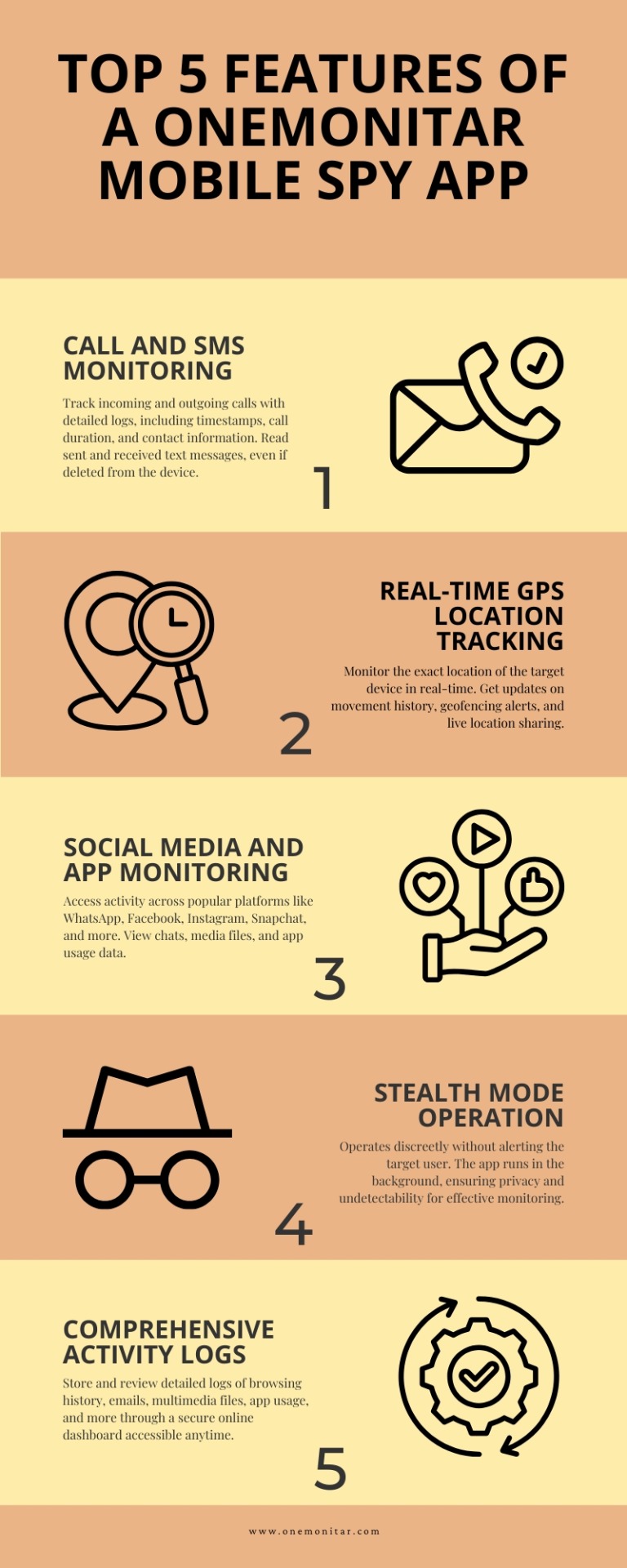
Stay informed and in control with ONEMONITAR, the powerful mobile spy app trusted by thousands. Monitor calls, messages, GPS location, and social media discreetly in real-time. Perfect for ensuring family safety and improving workplace productivity. Affordable, secure, and easy to use—start monitoring today!
#Mobile spy app#ONEMONITAR#real-time monitoring#GPS tracking#call tracking#SMS monitoring#social media monitoring#employee tracking#family safety#spy app#discreet monitoring#secure tracking#mobile monitoring solution#affordable spy app#digital safety tool.
0 notes
Text
Need a way to monitor your team? Our list of top employee monitoring software for small businesses can help you stay on top of productivity.
#employee monitoring software#small business tools#productivity software#workforce management software#business software#performance tracking#employee productivity#business efficiency#best software#top software
0 notes
Text
Boost Your Startup’s Growth: The Game-Changing Power of Monitoring Employee Online Activity
Attention Startup Founders! Are you ready to unlock the secrets to unparalleled productivity and growth? Discover how monitoring employee online activity can transform your team dynamics and catapult your startup to new heights! 📈 Dive into our latest ar
In today’s fast-paced startup ecosystem, efficiency and productivity are critical for success. According to Forbes, companies that implemented employee monitoring software reported an average productivity increase of 10-20%. Startups often operate with lean teams and tight resources, making the most of every minute and dollar essential to survival and growth. One powerful tool that more startups…
#Benefits of Employee Monitoring Tools#business#Employee Monitoring#Employee Productivity#Employee Productivity Tips#HR software#Online Monitoring#SentryPC#small businesses#startups#success#Tips for Employee Productivity#TRELLO
0 notes
Text

Boost your productivity tracking software with Workstatus! Our advanced analytics feature provides in-depth insights into your team's performance, helping you identify trends, optimize workflows, and enhance overall efficiency. With Workstatus, you can turn data into actionable strategies, ensuring your team stays on track and productive.
#productivity tracking software#employee performance#team efficiency#productivity tools#real-time monitoring
0 notes
Text
Remote Collaboration: Tools & Strategies For Virtual Teams

It has become increasingly prevalent, driven by the rise of global teams and the need for flexibility in work arrangements. Effective remote-collaboration bridges the gap between team members who may be scattered across different time zones, cultures, and work environments.
Central to remote collaboration are digital tools that facilitate communication, project management, and document sharing. Platforms like Slack, Microsoft Teams, and Zoom have revolutionized how teams interact, enabling real-time messaging, video conferencing, and collaborative document editing. These tools not only enhance communication but also ensure that team members can work together seamlessly, regardless of their physical location.
Key to successful remote-collaboration is the establishment of clear communication protocols and expectations. This includes defining which tools to use for different types of communication—instant messaging for quick questions, email for formal communications, and video calls for meetings. Additionally, fostering a culture of transparency and inclusivity is crucial, ensuring that all team members feel connected and engaged, despite the physical distance.
Remote Team Collaboration
Remote team collaboration involves using digital tools and strategies to facilitate effective teamwork among members who are geographically dispersed. It has become a crucial aspect of modern work environments, driven by the increase in remote work arrangements and global teams. Here’s an overview of key components and best practices for successful remote-collaboration:
Communication Tools: Platforms like Slack, Microsoft Teams, and Zoom enable real-time communication through instant messaging, video conferencing, and calls. These tools are essential for maintaining regular contact, hosting virtual meetings, and ensuring that team members can quickly address issues and share updates.
Project Management Software: Tools such as Trello, Asana, and ClickUp help teams organize tasks, set deadlines, and track progress. These platforms often include features for assigning tasks, setting priorities, and visualizing workflows, which help keep everyone on the same page.
Collaborative Document Editing: Google Workspace and Microsoft 365 provide cloud-based solutions that allow multiple users to work on the same documents simultaneously. This is crucial for creating and editing shared files, ensuring that all team members have access to the latest versions.
Collaboration Tools For Remote Teams
Collaboration tools have become indispensable for remote teams. These tools foster communication, enhance productivity, and ensure seamless project management, despite the physical distances separating team members.
Among the most popular are communication platforms like Slack and Microsoft Teams, which offer instant messaging, video conferencing, and integration with other software, allowing for real-time discussions and quick decision-making for work from home people. Video conferencing tools such as Zoom and Google Meet have revolutionized virtual meetings, making face-to-face interaction possible, which is crucial for maintaining team morale and clarity.
Project management tools like Trello, Asana, and Monday.com help teams organize tasks, set deadlines, and track progress through visual boards and timelines, ensuring everyone is on the same page. For document collaboration, Google Workspace and Microsoft Office 365 provide cloud-based solutions where multiple users can work on documents simultaneously, leaving comments and edits in real-time.
Is Employee Monitoring Software Worth It?

The worth of employee monitoring software largely depends on the specific needs and goals of a business. Here are some key considerations:
Pros
Productivity Tracking: Employee monitoring software can help track productivity by providing data on how employees spend their time. This can identify inefficiencies and help optimize workflows. Tracking employees can also be considered a Productivity Hack.
Accountability: It ensures employees are accountable for their work, which can be particularly important in remote work settings where direct supervision is challenging.
Security: Monitoring software can protect sensitive information by detecting unauthorized access and preventing data breaches.
Time Management: It can track time spent on various tasks, helping managers allocate resources more effectively and employees manage their own time better.
Cons
Privacy Concerns: Monitoring can lead to privacy issues and create a sense of distrust among employees. It's crucial to implement it transparently and ethically.
Morale And Trust: Over-monitoring can negatively impact employee morale and trust. Employees may feel micromanaged and stressed, which can reduce overall job satisfaction and productivity.
Cost: Implementing and maintaining monitoring software can be costly, and businesses need to weigh this against the potential benefits.
Legal Implications: There are legal considerations and regulations regarding employee monitoring that vary by region. Companies must ensure compliance to avoid legal issues. Also Watch: Leading Employee Engagement and Workforce Productivity Tool
youtube
Conclusion
In conclusion, remote collaboration are essential in today's increasingly digital and globalized work environment. They bridge the gap created by physical distances, enabling seamless communication, efficient project management, and collaborative work on documents and code.
Tools like Slack, Zoom, Trello, and Google Workspace ensure that remote teams can stay connected, organized, and productive. By fostering a culture of transparency, accountability, and continuous communication, these tools not only enhance productivity but also support team morale and cohesion. As remote work continues to grow, the importance and utility of these collaboration tools will only increase, making them indispensable for the future of work.
#Remote Collaboration#remote team collaboration#remote teamwork#collaboration tools#employee monitoring software#Youtube
0 notes
Text
SWOT analysis for employees – Assess and boost workforce performance
In modern businesses with evolved workplaces, the need for performance evaluation and workforce encouragement is a continuous process. Business leaders are constantly looking for helpful approaches to promote a vibrant company culture, enhance employee engagement, and improve overall productivity at work. With critical business elements to be aligned, the worth of workforce management software…
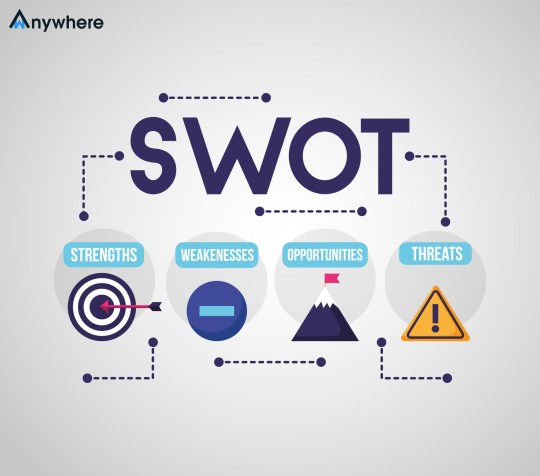
View On WordPress
#boost workforce performance#Employee Engagement#enhance workforce efficiency#performance monitoring software#productivity management software#real-time monitoring tools#SWOT analysis for employees#Workforce Management Software
0 notes
Text
Maximize your Efficiency with real-time Employee Monitoring Tool
In today’s fast-changing work environment where employees can easily want remote and hybrid work models are becoming increasingly prevalent, maintaining and enhancing productivity is vital for businesses. TrackOlap’s Real-time employee monitoring tool helps to manage remote teams effectively by providing a comprehensive solution to these solutions. Employee tracking software enables businesses to gain critical insights into their remote operations, enhancing high productivity despite geographical and temporal barriers.

Get Depth into Real-Time Employee Monitoring
Employee Tracking software involves continuously tracking employees’ task activities through specialized software. This offers several benefits. Including high productivity, improved product management, and increased employee accountability. In this blog, we will highlight the advantages of utilizing real-time employee tracking tools and the potential disadvantages of not incorporating them into your team management strategy.
Advantages of Real-Time Monitoring Solutions
High Productivity
A major advantage of real-time employee monitoring solutions is their ability to significantly high productivity. With capabilities like time tracking and project management, owners/ managers can effectively observe how team members utilize their work hours, find inefficiencies, and allocate resources more effectively. TrackOlap’s time tracking module offers detailed insights into employees’ work patterns, helping to build a healthy workflow whether remote employee or hybrid employee to ensure every minute of efficiency is utilized productively.
2. Enhance Project Management
Efficient project management is vital for meeting deadlines and enhancing project goals. Real-time monitoring Software like TrackOlap allows Owners/ managers to assign tasks, and track the progress and status of individual projects in real time. This ensures track on project and issues can be addressed promptly. This ability to view chronological sequences of tasks and activities helps maintain a clear overview and prevent project delays.
3. Communication and Collaboration
Teams often struggle with real-time communication and collaboration due to geographical barriers. TrackOlap employee monitoring tools offer a comprehensive dashboard that promotes effortless interaction and teamwork among members. With several features like automated screenshots and dynamic reports, owners/ managers can keep an eye on team performance, enhance communication, and reduce frustration by having a clear understanding of project requirements.
4. Attendance Data and Time- Management
Managing time and Tracking attendance is critical for remote teams. Tools like TrackOlap automatically help to collect data and provide a detailed overview of employees’ time spent on the job. Includes information on when work was done, work time, and whether the employee took their lunch break. Such insights help managers/ owners to ensure that employees are adhering to given schedules and maintaining a balanced workload.
5. Burnout Prevention
Monitoring software assists in detecting signs of burnout among employees by analyzing their work patterns and productivity levels. TrackOlap’s employee monitoring software increases productivity and efficiency to prevent burnout by ensuring employees are overworked and are taking necessary breaks. This helps to flow healthy workflow life — balancing and improving overall job satisfaction.
6. Detailed Reporting
Employee monitoring tools generate comprehensive and detailed reports that aid managers in making informed decisions. TrackOlap provides automated generative reports that can be scheduled on a daily, weekly, or monthly basis as needed. Reports offer valuable feedback by managers/owners to pinpoint areas needing improvement to boost efficiency and the organization’s productivity.
You may also Like: Top 5 Tips to Manage Remote Workforce via Employee Tracking Solution
Disadvantages of not having Real-Time Employee Monitoring Tools
Less Productivity
If Organizations do not have real-time monitoring tools can be overwhelming majorly for remote teams. The inability to track project- progress in real-time can result in not meeting deadlines, miscommunication, and project delays. Without a clear overview of tasks and activities, managers/ Owners may find themselves to ensure that projects remain on track and achieve their objectives.
2. Ineffective Project Management
Projects that can not be managed without real-time monitoring tools can be overwhelming majorly for remote teams. The inability to monitor proper project progress in real-time can result in not meeting deadlines, miscommunication, and project delays. It is challenging for managers/owners to track the project and ensure that the project remains on track and achieves its objective.
3. Lesser Communication and Collaboration
Teams mainly depend on effective communication and collaboration to meet their objectives. Without TrackOlap’s Software that helps facilitate effortless communication, team members may find difficulties to encounter in staying connected and collaborating efficiently which can lead to misunderstanding, and frustration and affect deadlines in overall team performance.
4. Issues Taking Attendance and Time Management
Manually taking attendance and time management can be laborious and prone to errors without automated tools, managers/ Owners may find challenges to ensure employees adhere to their schedules and maintain a balanced workload. This can lead to difficulties in finding attendance records and managing the time of remote employees.
5. Risk of Burnout
The absence of employee monitoring tools may make it difficult for managers/ Owners to spot the risk of burnout among their employees. Without insights into work patterns and productivity management, there is a high risk of overworking and burnout, resulting in higher turnover rates and decreased team productivity Overall.
6. Lack of Insightful Reporting
Generating detailed and insightful reports without real-time tracking tools can be challenging. Managers / Owners may lack the necessary data to make informative decisions. The absence of remote employee monitoring software can hinder the ability to offer timely feedback and make data-driven decisions.
In Conclusion:
Concluding real-time employee monitoring tools into your team management application can ensure streamlined operations and enhanced productivity and goal attainment. The insights furnished by these tools empower owners to make informative decisions streamline workflows and cultivate a positive and effective work culture. TrackOlap embraces the capabilities through real-time employee monitoring tools today to elevate your team management’s future practices to new heights.
If you want to know more about time-tracking tools, then get in touch with our experts today!
#Employee Monitoring Tool#Employee monitoring tools#Employee tracking software#Employee monitoring solution#Employee monitoring software#Real-time tracking tool
0 notes
Text
Unlocking Employee Potential: A Guide To Selecting Effective Engagement Tools
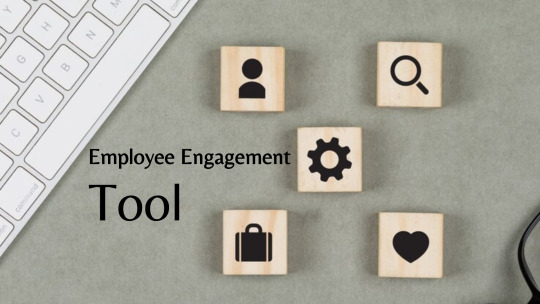
The pursuit of employee engagement has become paramount. Engaged employees are not merely contributors; they are the driving force behind innovation, productivity, and organizational growth. However, fostering and sustaining high levels of engagement requires more than just conventional strategies—it demands a nuanced approach tailored to the unique dynamics of modern workplaces.
Welcome to our comprehensive guide on unlocking employee potential through the judicious selection of effective engagement tools. In this article, we delve into the intricacies of Employee Engagement Tool, exploring its significance, challenges, and most importantly, the actionable strategies and tools that empower organizations to cultivate a culture of engagement and unleash the full potential of their workforce.
Drawing upon the latest research findings and real-world insights, we will navigate through the multifaceted realm of employee engagement, offering practical advice and expert recommendations to help you navigate the ever-evolving landscape of human capital management. Whether you're a seasoned HR professional seeking to revitalize your engagement initiatives or a business leader aiming to foster a culture of excellence, this guide is your roadmap to success.
Employee Engagement Solutions
Employee engagement solutions encompass a range of tools and platforms designed to enhance communication, collaboration, and motivation among employees. These solutions leverage technology to create meaningful interactions and foster a sense of belonging and purpose within the workforce.
Why Employee Engagement Software Valuable For Your Business?
Improved Communication
Employee engagement software facilitates seamless communication between employees and management, breaking down silos and fostering transparency. Through features such as messaging apps, discussion forums, and virtual town halls, employees can share ideas, provide feedback, and stay informed about company updates.
Moreover, these platforms provide avenues for open dialogue, enabling management to address concerns promptly and foster a culture of trust and collaboration.
Increased Productivity
By providing employees with the tools and resources they need to succeed, engagement software boosts productivity levels across the organization. Features such as task management, goal tracking, and performance analytics empower employees to prioritize tasks, set achievable goals, and monitor their progress in real-time. Also you may use the employee monitoring tool to analyze the productivity of employees.
Additionally, automation features streamline repetitive tasks, allowing employees to focus their time and energy on high-value activities, thus driving overall productivity and efficiency.
Enhanced Collaboration
Collaboration is essential for driving innovation and achieving business objectives. Employee engagement tools facilitate collaboration by enabling teams to collaborate on projects, share documents, and coordinate tasks seamlessly.
Virtual collaboration platforms, project management tools, and shared calendars promote teamwork and synergy among employees. Furthermore, these tools break down geographical barriers, allowing remote teams to collaborate effectively and contribute to shared goals regardless of their location.
Boosted Morale And Job Satisfaction

Employee engagement software plays a crucial role in fostering a positive work environment and promoting employee satisfaction. Recognition programs, employee surveys, and peer-to-peer recognition features empower employees to feel valued and appreciated for their contributions, leading to higher levels of job satisfaction and morale.
Additionally, these platforms provide opportunities for professional growth and development, allowing employees to enhance their skills, pursue meaningful career paths, and achieve their full potential within the organization.
Retention And Talent Development
Engaged employees are more likely to remain loyal to their organization and invest in their professional development. Employee engagement solutions support talent development initiatives by providing learning and development resources, career pathing tools, and mentorship programs.
By investing in employee growth and development, businesses can attract top talent and retain their best performers. Furthermore, these tools create a culture of continuous learning and improvement, ensuring that employees feel supported and motivated to excel in their roles.
Benefits Of Employee Engagement Tools
It offer a myriad of benefits for organizations striving to create a culture of engagement and empowerment. From improved communication and collaboration to increased productivity and job satisfaction, these tools serve as catalysts for organizational success.
By investing in the right engagement tools, businesses can unlock the full potential of their workforce, drive innovation, and achieve sustainable growth. Also Watch: Leading Employee Engagement and Workforce Productivity Tool
youtube
Conclusion
In conclusion, selecting the right Employee Engagement Tool is paramount for organizations committed to unlocking the full potential of their workforce and fostering a culture of engagement and empowerment.
By investing in effective engagement tools, businesses can reap the benefits of improved communication, increased productivity, boosted morale, and enhanced talent development. Embrace the power of Employee Engagement solutions to create a thriving and dynamic workplace where employees feel valued, motivated, and inspired to achieve their goals.
#Employee Engagement Tool#employee engagement#employee monitoring tool#workforce management#employee engagement tools#Youtube
0 notes
Text
Elevating Excellence: The Role Of Performance Monitoring In Business Success
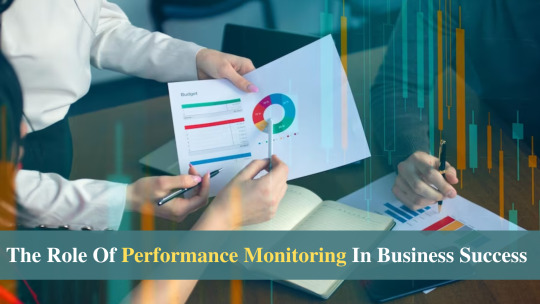
In the modern rapid corporate world, obtaining and maintaining excellence is a never-ending quest. "Elevating Excellence: The Role of Performance Monitoring in Business Success," a thorough handbook, digs into the transforming impact of monitoring performance on organizational profitability. As firms recognise the critical role of monitoring performance in improving staff productivity and overall success, strategic monitoring methods must be used.
Implementing monitoring performance tools successfully takes more than just recording data; it necessitates a planned strategy that corresponds with organizational goals. Businesses must carefully choose technologies that provide not just real-time performance information but also the adaptability to changing work paradigms. Organisations use monitoring performance to improve operational efficiency, uncover growth possibilities, and manage possible bottlenecks, making the synergy between technology and strategy important.
Why Is Measuring The Performance Of Your Employee Beneficial?
Measuring employee performance is critical for a variety of reasons. For starters, it gives insights into individual and group contributions, enabling firms to identify and reward top workers. monitoring performance also indicates areas for improvement, allowing for focused training and development programmes. This data-driven strategy develops an accountability culture, pushes individuals to perform, and connects individual efforts with organizational goals, resulting in increased productivity and success.
It also indicates areas for improvement, allowing for focused training and development programmes. Businesses may design their training programmes to meet these gaps by identifying specific skills or procedures that may require improvement, ensuring that the staff stays flexible and aligned with developing industry standards.
This data-driven strategy develops an accountability culture inside the organization. When employees are aware that their performance is being watched and assessed, they are more likely to take responsibility of their job. This sense of duty helps to create a healthy work culture in which employees are motivated to give their all while knowing that their efforts are recognised and appreciated.
Furthermore, monitoring performance insights aid in aligning individual efforts with organizational goals. Businesses may guarantee that every team member knows their position in contributing to the overall success of the organization by clearly articulating objectives and key performance metrics. This alignment is critical for developing a cohesive and motivated staff that works together towards common goals.
Top 5 Performance Monitoring Software
Toggl Track
Toggl Track, known for its simplicity and ease of use, simplifies time tracking and project management. Its user-friendly interfaces and effective features make it a popular choice for companies that value simple monitoring performance solutions. Toggl Track's one-click timers and user-friendly project management tools make tracking easier while also ensuring accuracy.
EmpMonitor
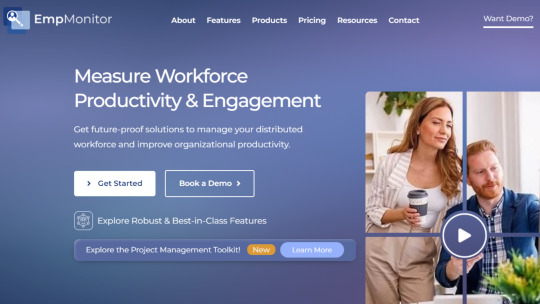
It sets itself apart with numerous capabilities that go beyond typical monitoring performance. It offers real-time insights on staff activity, as well as productivity analysis and customisable reports. EmpMonitor’s user-friendly design makes it a useful tool for organisations looking to improve staff productivity. The ability to track not only time but also application and internet activity provides a comprehensive picture of employee involvement and attention.
Workpuls
Workpuls is a flexible monitoring performance tool since it excels at productivity analysis and time tracking. Workpuls delivers meaningful insights into employee performance and aids to operational efficiency through features such as automatic time mapping and real-time monitoring. Its emphasis on user-friendliness and extensive reporting makes it a valuable tool for organisations looking to optimize their staff.
DeskTime
DeskTime has powerful capabilities for measuring staff productivity. Its features include automated time monitoring, project classification, and extensive reporting, all of which contribute to a thorough understanding of labor dynamics. The emphasis on giving insights on project-related activities in DeskTime enables firms to make educated decisions about resource allocation and project schedules.
ActivTrak
ActivTrak distinguishes itself with powerful analytics and workforce insights. It provides real-time monitoring, productivity analysis, and behavioral analytics, making it an invaluable tool for firms seeking complete performance insight. The focus of ActivTrak on analyzing employee behavior and trends adds to proactive management methods, allowing organisations to react to changing workplace dynamics.
Also Watch: All-In-One Workforce Management Solution
youtube
Conclusion

Finally, the use of Performance Monitoring tools is more than just a technology investment; it is a strategic move towards improving corporate operations. monitoring performance becomes the foundation of a healthy organizational culture, from recognising individual accomplishments to identifying areas for development.
Businesses may achieve new heights of success by embracing cutting-edge software like EmpMonitor and its equivalents, which optimize employee performance and build a culture of continuous development. The path to corporate excellence is paved with insights acquired from good monitoring performance, making it a necessary component of modern organizational success.
#Performance Monitoring#Monitoring Performance#Monitoring#Monitoring Tool#Employee Monitoring#Youtube
0 notes
Text
The Complete Guide to Android Spy Apps: Monitoring Made Easy
In today’s digitally driven world, the ability to monitor and manage devices remotely has become a vital tool for both personal and professional purposes. Android spy apps are gaining significant traction, enabling individuals and organizations to keep track of device activities with ease. But what are Android spy apps, how do they work, and are they ethical to use? Let’s dive in.
#android spy app#android spy application#android spy software#android spy tool#android spy app for monitoring#phone monitoring app#employee monitoring
0 notes
Text
Find the best options for employee monitoring software that make it easy to track tasks, ensure productivity, and maintain project transparency. Ideal for remote and on-site teams alike.
#software#employee monitoring software#productivity software#remote team management#workforce tracking#time tracking software#employee productivity tools#performance monitoring#business efficiency tools#workplace accountability#best monitoring software#best software#top software
0 notes
Text
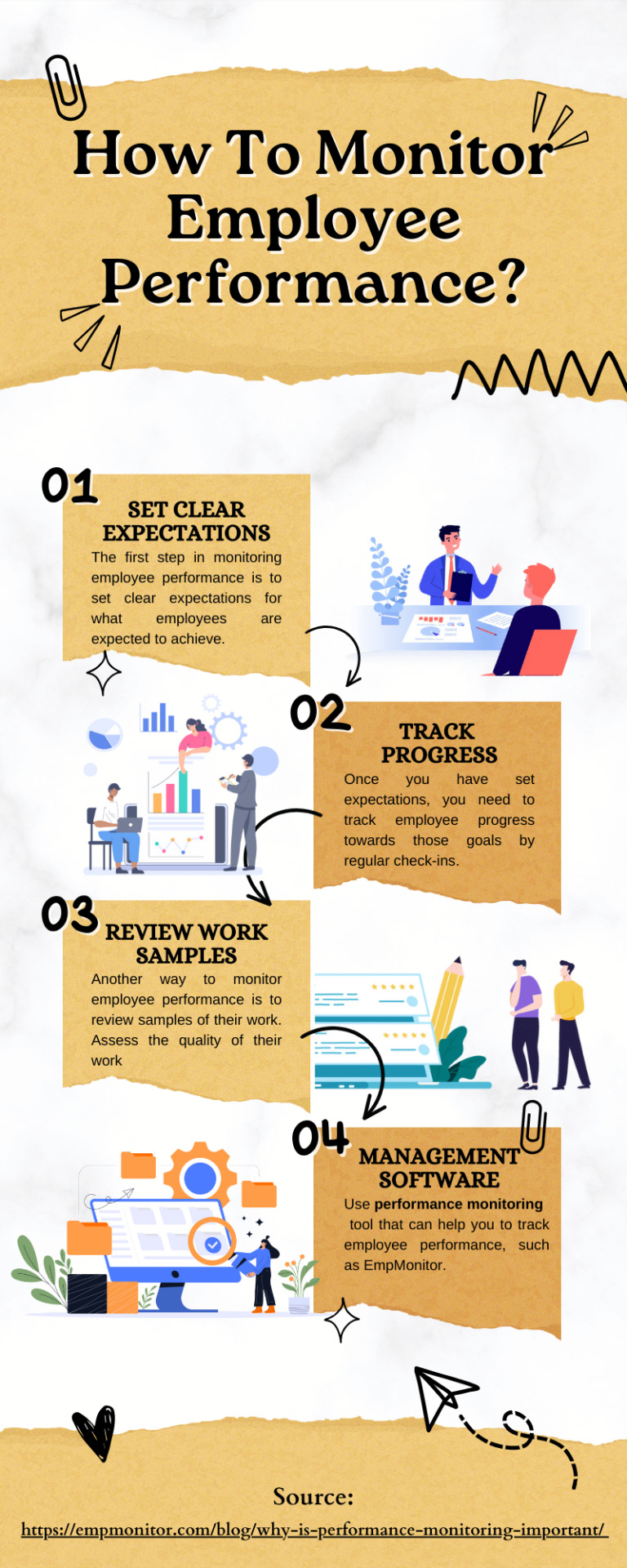
There are many ways to monitor employee performance. In this infographic, you will get to know how to do employee performance monitoring.
0 notes
Text
Mastering Employee Productivity through Effective Time Tracking
In today's fast-paced business landscape, maximizing employee productivity is a crucial factor for organizational success. The ability to efficiently manage time, tasks, and responsibilities can significantly impact a company's bottom line. One of the most powerful tools at your disposal for achieving this is employee time tracking. By implementing a comprehensive time tracking system, businesses can gain insights into employee work patterns, identify bottlenecks, and create strategies to boost overall productivity.
The Importance of Employee Productivity
Employee productivity directly influences the efficiency and profitability of an organization. It's not just about getting more work done; it's about accomplishing tasks with precision, meeting deadlines consistently, and fostering a culture of continuous improvement. High productivity levels lead to increased employee morale, better customer satisfaction, and improved innovation.
Understanding Employee Time Tracking
Employee time tracking involves monitoring the hours employees spend on various tasks and projects. It goes beyond mere clocking in and out—it's about tracking the distribution of time across different activities to identify where inefficiencies lie. Modern time tracking tools offer a range of features, including project-specific tracking, task categorization, and even automated time capture.
Benefits of Employee Time Tracking
Data-Driven Insights: Time tracking generates valuable data that provides insights into how employees allocate their time. This data can be analyzed to understand which tasks take longer than expected, where time is being wasted, and which projects yield the best results.
Resource Allocation: By analyzing time tracking data, managers can make informed decisions about allocating resources. They can distribute tasks according to team members' strengths, balance workloads, and prevent burnout.
Accurate Project Estimates: Time tracking helps in creating more accurate project estimates for future tasks. This is especially useful for client-facing projects where meeting deadlines is crucial.
Identifying Bottlenecks: Through time tracking, bottlenecks and workflow disruptions become evident. This allows managers to redesign processes and eliminate obstacles that hinder productivity.
Performance Evaluation: Time tracking data provides a fair and objective basis for evaluating employee performance. Recognizing top performers becomes easier when their contributions are quantifiable.
Remote Work Management: With the rise of remote work, time tracking becomes even more critical. It ensures that employees are accountable and working efficiently, regardless of their location.
Implementing Effective Employee Time Tracking
Choose the Right Tools: Invest in user-friendly time tracking software that aligns with your organization's needs. The tool should allow categorization of tasks, integration with project management software, and real-time tracking.
Set Clear Guidelines: Communicate the purpose and benefits of time tracking to your employees. Set clear guidelines on how the tracking will be done and emphasize its role in enhancing individual and collective productivity.
Training and Support: Provide training on how to use the time tracking tool effectively. Address any concerns or questions your employees might have and ensure they feel comfortable with the new system.
Respect Privacy: Assure employees that time tracking is not meant for surveillance but for improving workflows. Emphasize that the data will be used to enhance processes and not to micromanage.
Regularly Review Data: Schedule regular reviews of the time tracking data with teams or individuals. Use this time to identify areas of improvement, acknowledge achievements, and address any challenges.
Flexibility and Feedback: Remain open to feedback from employees about the time tracking process. If adjustments are needed, make them. Flexibility in the process ensures that it remains a valuable tool rather than a burden.
Fostering a Productivity-Friendly Culture
Remember that employee productivity isn't solely dependent on time tracking; it's a part of the larger picture. To create a productivity-friendly culture:
Set Realistic Goals: Ensure that the goals you set for your employees are achievable and aligned with the organization's objectives. Unrealistic goals can lead to burnout and decreased morale.
Encourage Breaks: Productivity doesn't thrive in a culture of constant work. Encourage employees to take regular breaks to recharge and return to tasks with renewed focus.
Promote Skill Development: Invest in training and upskilling opportunities for your employees. When they feel they're growing, their motivation and productivity increase.
Recognize and Reward: Acknowledge hard work and accomplishments. Whether big or small, recognition boosts morale and motivates employees to maintain high productivity levels.
Lead by Example: Productivity trickles down from leadership. Be a role model by demonstrating effective time management and a balanced approach to work.
#employee productivity software#time tracking#task management software#work management#monitoring software#employee time tracking#project management tools#task management tools#Maximizing employee Productivity
1 note
·
View note